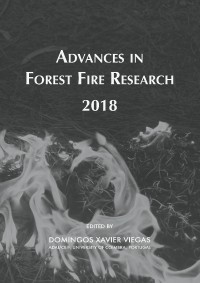Please use this identifier to cite or link to this item:
https://hdl.handle.net/10316.2/44568| Title: | Fire seasons in Portugal: the role of weather and climate | Authors: | Amraoui, Malik Parente, Joana Pereira, Mário G. |
Keywords: | Temporal variability;Fire Season;Forest Fires;Weather conditions;Portugal | Issue Date: | 2018 | Publisher: | Imprensa da Universidade de Coimbra | Journal: | http://hdl.handle.net/10316.2/44517 | Abstract: | Forest fires (FFs) are critical elements of Earth system at the global, regional and local scales and, independently of their causes may have a high environmental, social, economic and climatological effects as well as cause loss of lives and injured people. Weather and climate control, directly and indirectly, most of the aspects of FFs. This study aims to identify: (i) the temporal variability of FFs, with special attention to the differences between the spring and summer fire seasons; and, (ii) the weather conditions during the days and months of higher and lower fire incidence. The fire database used is the Portuguese Rural Fire Dataset that comprises relevant information about each fire event such as: ignition date, fire duration, location ignition and total burnt area (BA). The meteorological dataset used is the ERA-Interim which covers the climatological 35-years period (1980 – 2014) and consists of daily fields at 12 UTC, with a spatial resolution of 0.125° × 0.125° latitude/longitude grid, over a spatial domain (10°W – 6°E, 36.5°N – 42.5°N) centred in Portugal. The role played by the meteorological conditions over a given region is assessed by analysing the associated patterns of thermo-hydro-dynamical fields at different atmospheric levels. Analysed patterns are anomaly composites, consisting of arithmetic means (performed over all days associated with very high number of FFs) of daily departures of 12 UTC meteorological fields from the respective average for that day over the reference period (1980 – 2014). Temporal variability of fires (number of forest fires, NFF) in Portugal unveil two fire seasons: (i) the first one, during winter-spring with highest activity in March (part of the non-critical period, NCP); and, (ii) the second, in summer with pronounced peak in July and August (during the critical period, CP). Atmospheric thermodynamic and circulation patterns confirm the existence of anomalous conditions observed over the affected areas, on daily and monthly scales. This atmospheric circulation is characterized by predominant easterlies crossing that advect continental air into the sub-region. During summer, the circulation is characterized by a predominant hot and dry flow from continental Europe and north Africa, contributing to values of air temperature (relative humidity) well above (below) average. During winter, the extremely low values of relative humidity are the most noticeable feature, which result from the anomalous Eastward circulation over the cold and dry Western Europe. The findings of this study will contribute to a better fire prevention, firefighting and crisis management. | URI: | https://hdl.handle.net/10316.2/44568 | ISBN: | 978-989-26-16-506 (PDF) | DOI: | 10.14195/978-989-26-16-506_51 | Rights: | open access |
| Appears in Collections: | Advances in forest fire research 2018 |
Files in This Item:
| File | Description | Size | Format | |
|---|---|---|---|---|
| fire_seasons_in_portugal.pdf | 1.65 MB | Adobe PDF |  |
Items in DSpace are protected by copyright, with all rights reserved, unless otherwise indicated.
